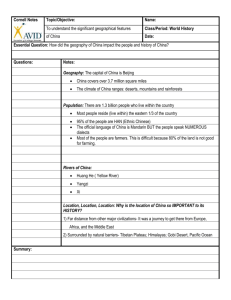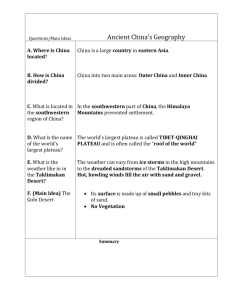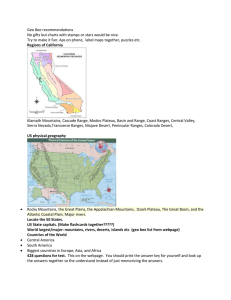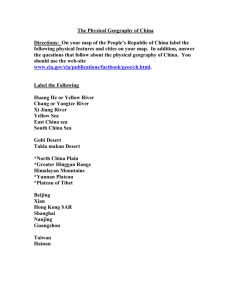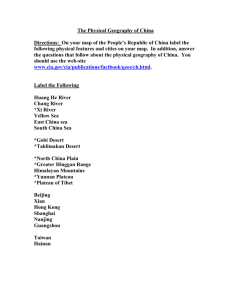Geography of China
advertisement
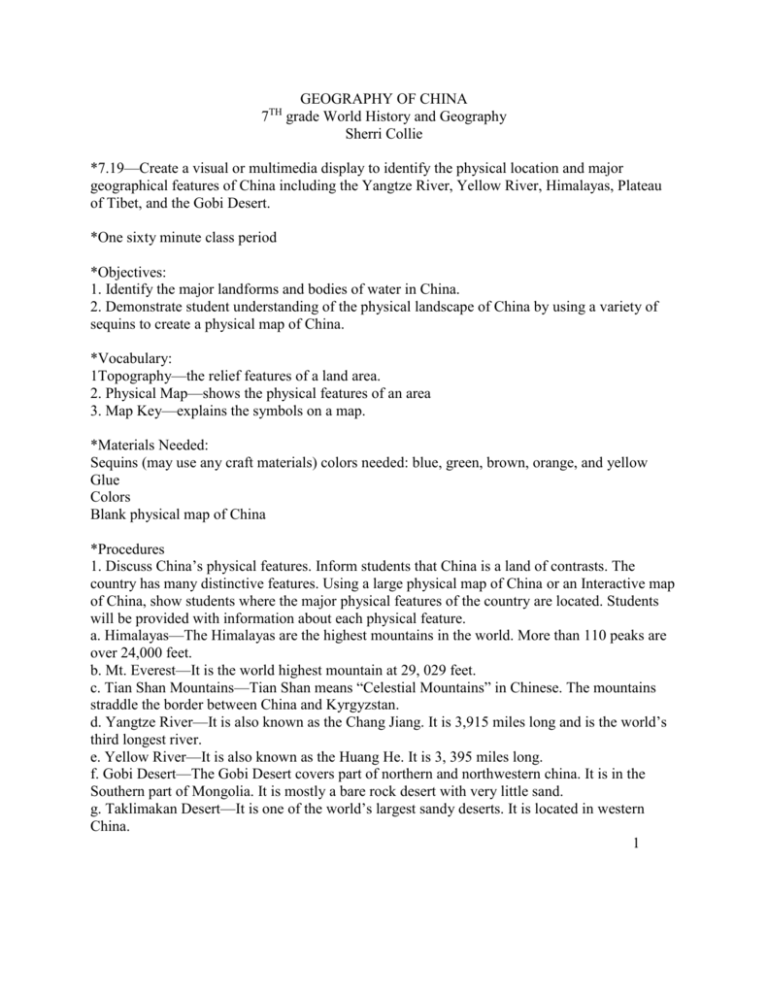
TH 7 GEOGRAPHY OF CHINA grade World History and Geography Sherri Collie *7.19—Create a visual or multimedia display to identify the physical location and major geographical features of China including the Yangtze River, Yellow River, Himalayas, Plateau of Tibet, and the Gobi Desert. *One sixty minute class period *Objectives: 1. Identify the major landforms and bodies of water in China. 2. Demonstrate student understanding of the physical landscape of China by using a variety of sequins to create a physical map of China. *Vocabulary: 1Topography—the relief features of a land area. 2. Physical Map—shows the physical features of an area 3. Map Key—explains the symbols on a map. *Materials Needed: Sequins (may use any craft materials) colors needed: blue, green, brown, orange, and yellow Glue Colors Blank physical map of China *Procedures 1. Discuss China’s physical features. Inform students that China is a land of contrasts. The country has many distinctive features. Using a large physical map of China or an Interactive map of China, show students where the major physical features of the country are located. Students will be provided with information about each physical feature. a. Himalayas—The Himalayas are the highest mountains in the world. More than 110 peaks are over 24,000 feet. b. Mt. Everest—It is the world highest mountain at 29, 029 feet. c. Tian Shan Mountains—Tian Shan means “Celestial Mountains” in Chinese. The mountains straddle the border between China and Kyrgyzstan. d. Yangtze River—It is also known as the Chang Jiang. It is 3,915 miles long and is the world’s third longest river. e. Yellow River—It is also known as the Huang He. It is 3, 395 miles long. f. Gobi Desert—The Gobi Desert covers part of northern and northwestern china. It is in the Southern part of Mongolia. It is mostly a bare rock desert with very little sand. g. Taklimakan Desert—It is one of the world’s largest sandy deserts. It is located in western China. 1 h. Plateau of Tibet—This is a high plateau of southwestern China. The plateau is north of the Himalayas. It is about 965,000 square miles with elevations of 13,000 to 15,000 feet. i. North China Plains—It is a large alluvial plain of north China. It is a highly densely populated region. 2. Have students to label each physical feature on the blank map after discussing the feature. 3. Students will color in the areas on their labeled maps according to the map key. 4. Once students have completed labeling and coloring the map of China, they will begin to place sequins on the features. *Questions: 1. What is the topography of China like? 2. How does the country’s physical features affect where people live in China? 3. What are the major bodies of water surrounding China? 4. What could be key industries of China due to its location by so much water? *Assessment: Physical Map of China *Resources: Textbook—Pearson-myWorld—History and Geography Rand McNally Junior classroom atlas or textbook atlas www.afe.easia.columbia.edu www.britannica.com 2
